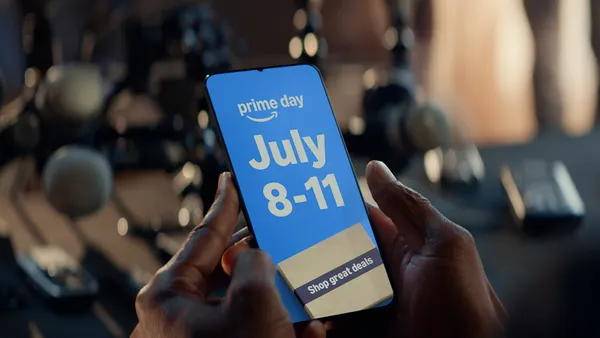With the help of 50 Instagram users, Lord & Taylor recently garnered a lot of attention for some of its spring styles, including a bohemian dress that sold out thanks to a barrage of posts on the social media app.
It seemed like quite a coup. After all, some marketing experts say that endorsements from bloggers and Instagrammers carry more weight with young people than celebrities do.
But, it turns out, that wasn’t a naturally viral splash, but a coordinated — and paid — campaign by the retailer.
And that is a problem.
Afoul of the law?
The Federal Trade Commission updated its rules about what is paid advertising (and what is not) in 2009 and again in 2013, in part because of the rise of social media and social media marketing. The lack of disclosure around the fact that Lord & Taylor paid bloggers and Instagram users for its posts could violate these rules, which require companies to let it be known when posts are sponsored or paid.
It’s easy to imagine that bloggers, who have varying levels of sophistication when it comes to marketing or business acumen for sure, may or may not be aware of the limits, which, by the way, are pretty straightforward.
Mary Engle, the FTC’s associate director for advertising practices at the FTC, put it this way in a question and answer discussion with gaming site Gamasutra:
“The idea is that if you're providing an endorsement of a product …if you are paid or compensated, then yes, you should disclose that you are paid,” Engle said. “So far we have felt that our general principles are flexible enough to apply to the different contexts. But we can always think about doing some FAQs to highlight specific scenarios.”
It’s hard to believe that marketers at Lord & Taylor weren't aware of the FTC’s regulation, but a 2014 study of 300 marketers and content creators by social media marketing company IZEA found that 60% of marketers and 40% of content creators weren’t aware or were only vaguely aware of it.
“Advertisers have a responsibility to make sure that any sponsored content is marked as such," IZEA CEO and founder Ted Murphy told Inc. magazine. "The disclosure should be clear and conspicuous, so that the reader understands there is a material relationship between the content producer and the brand.”
The temptation
So why would an experienced marketing team at a venerable retailer like Lord & Taylor play fast and loose with these rules, assuming they were aware of them, at least vaguely? Probably because leaving your message to the wilds of the social media landscape means no more control of your message. There's a good chance that where marketers want clarity, social media may contain more of a muddy mixture.
But trust is all-important for retailers, perhaps more so than ever, says IT solutions company Cisco’s chief marketing officer Blair Christie.
“‘Brand promise' ultimately relies upon the trust consumers have placed in a brand,” she says. “Customers who are loyal to a brand will trust that the next product or service introduced under that brand will fulfill the brand promise.”
Furthermore, trust is often an overlooked benefit of building loyalty with customers, writes Anita Campbell, CEO of Small Business Trends.
“Often we think of social media as a way to drive traffic to websites, or build brand awareness or as another channel for marketing communications,” she says. “It can serve those and other purposes, but one of the best outcomes with social media is how it can build trust in customers and the general public that ultimately adds to your bottom line.”
Eroding trust
The FTC worries about consumer protection. It’s an unfair business practice to present content, commentary, or endorsements as freely given when they’ve been commissioned by a business. The consequence of that, from the consumer point of view, is the erosion of trust. And trust of a retailer is something that’s easily broken, but repaired with difficulty.
Amazon likely has this in mind, considering its recent unprecedented lawsuit against sites that supply fake positive reviews for products sold on its site, which the retailer says undermine customers’ trust.
“While small in number, these reviews threaten to undermine the trust that customers, and the vast majority of sellers and manufacturers, place in Amazon, thereby tarnishing Amazon’s brand,” the court filing reads in part. Amazon strictly prohibits any attempt to manipulate customer reviews and actively polices its website to remove false, misleading, and inauthentic reviews.”
The filing also says that inauthentic reviews on Amazon are creating “an unhealthy ecosystem” developing outside of Amazon to supply inauthentic reviews. While there's some difference between fake positive reviews or endorsement and paid-for positive reviews or endorsements, there isn’t really much daylight between them.
'The only way'
When the news stories and blog posts hit about Lord & Taylor’s campaign, the retailer added necessary #ad hashtags to make clear that their posts were paid endorsements.
But the damage was likely done. And it’s done, not just to the retailer skirting the disclosure, but also the participating bloggers and, by extension, all retailers and marketing campaigns, Ted Murphy recently told Marketing Land about last week's disclosures.
"I actually think in the long run [being open] is the only way to do this and be successful, because once people feel like they've been tricked or deceived, they lose trust in the brand and they perceive it negatively," Murphy says.
"And the same happens to the creator," he added. "Once people figure out that the person who they thought was just taking a picture in a dress that they liked was actually being paid to do that and was not disclosing that to them, that authenticity and credibility that person had with you is eroded."













